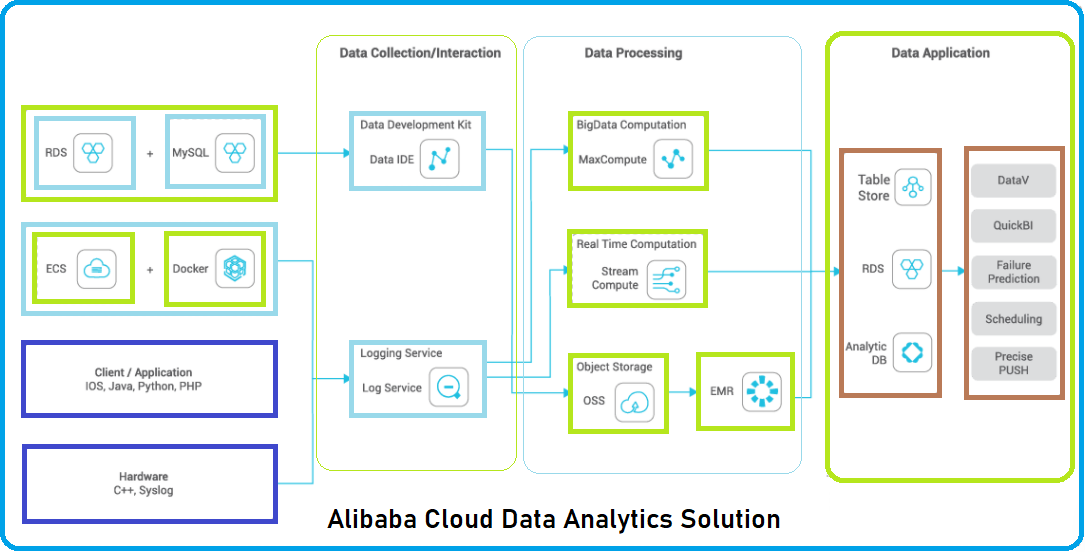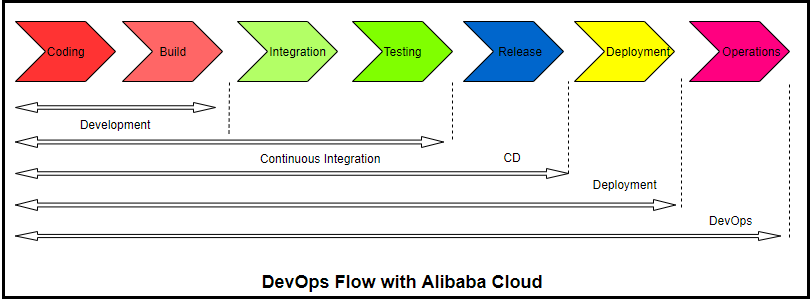By Shantanu Kaushik
Digital Transformation is the beginning of a more efficient and resource-rich practice scenario for any enterprise. The recent pandemic has made people more efficient, productive, and adaptable when facing challenging circumstances. Standard operating procedures had significant shifts, and numerous businesses experienced breakdowns due to the economic slowdown and workforce shortages.
Organizations like Alibaba Cloud were among the first to calculate the situation and take the necessary steps to support their customer base and the overall enterprise market-sphere to cope during the pandemic by providing highly flexible and elastic cloud services with numerous initiatives to help enterprises.
Some enterprises have adopted an ADE practice to lessen the struggle of adapting to the new normal. ADE is a process that enables organizations to evolve into autonomous digital enterprises.
An Autonomous Digital Enterprise (ADE) is a growth-oriented enterprise that delivers value in solutions and enables greater agility and flexibility of operations. An ADE focuses on customer experience and feedback to incorporate any actionable insights that their feedback provides. It also provides an accelerated solution inclusion with a CI/CD practice.
This article explores multiple facets of ADE, including customer experience, Automation and AI, Enterprise DevOps, Adaptive Security with Zero-Trust, and cloud-native.
In-person work culture shifted rapidly to off-base or remote culture during the pandemic. Many teams are working through virtual conferences using the cloud infrastructure data sharing capabilities . With an increased demand for virtual communication and collaboration, organizations had to reinvent their IT teams and infrastructure management. In some cases, subsidiary firms were launched to support workflow management in the digital channel. These data-driven industries evolved and innovated with digitization and communication.
These shifts in work culture and norms have rapidly accelerated business transformation. Enterprises have to reinvent their operations lifecycle and standard operation policies to sustain the shift to digital primary rather than the digital secondary point of approach.
The underlying networks are implementing new strategies and practices that encompass technological innovation with data handling and secure communications to enable work through the first phase of the digital-only collaboration-based work culture. Technology has transitioned from a supporting architecture to a primary driving factor for organizations to sustain and move forward towards success. This is how you become an Autonomous Digital Enterprises (ADE).
The shift to digital-only or digital primary culture has increased productivity. Some research predictions showcase an average increase of 15-25% productivity due to work-from-home or remote collaboration culture. As this technology-enabled evolution continues to be explored by organizations, we could see an all-new sustainable, automated, and agile business culture emerge from the remnants of the pandemic.
The primary components of ADEs are listed below:
1. Automation and AI
Automation and Artificial Intelligence (AI) are two significant components that bring value to any solution across all working systems. Automation cuts the time taken for an entire set of events, such as DevOps or Supply Chains. AI drives technology and data analytics to fathom solutions that are better equipped.
Automation cuts unnecessary human involvement by automating complex workflows that might result in erroneous task results if done manually. AI provides improved business insights and induces intelligence into the mix.

This remote or hybrid (remote and in-office teams) work culture relies on technology and infrastructure assurance. This assurance is the most important product of automation, artificial intelligence, and machine learning technology.
AIOps uses AI and data to perform operations more effectively to support today’s business requirements in a more defined manner. Today, organizations are facing a substantial increase in data volume, customer interactions, and operation complexity. This requires them to work with digital enterprise applications that can leverage any platform, including a hybrid cloud, multi-cloud, or on-premise setup.
Cloud-native scenarios have evolved to provide a much smarter and effective future strategy with more secure, centralized, and scalable AI-enabled operations (AIOps). Many predictive analysis reports have indicated that major shifts in operations and management are necessary and are already underway across organizations.
2. Customer Experience
An Autonomous Digital Enterprise has to encompass the needs or requirements of the customer. It has to operate in a customer-centric way to define and develop more personalized customer experiences. Here, Artificial Intelligence takes the driver's seat to work with data analytics to provide insights into user preferences. Data can be analyzed to build customer-centric solutions for any complexities in order to provide better experience for customers.
3. Enterprise DevOps
An effective DevOps pipeline is one of the prominent and mandatory practices to become an autonomous digital enterprise. DevOps provides velocity and great yield with automation by merging development and operations teams to accelerate delivery and application quality. DevOps brings about a cultural change while providing a far more equipped and capable practice scenario.

4. Security
An ADE must be secure. Alibaba Cloud security systems can detect and react to any malicious threat or breach attempt with a solutions line-up, including Anti-DDoS protection, firewalls, security center, sensitive data discovery and protection, and many others. When it comes to identity and authorization, an ADE must follow the concepts of zero-trust security architecture.
This architecture works primarily with Alibaba Cloud RAM or IDaaS and allows access to any system inside or outside the organization after identity and authorization demands are met. This has a greater security structure than traditional methods.
5. Cloud-Native
An ADE should be well-equipped with cloud-native technology to share resources and solutions. Cloud-native architecture adds security, performance, elasticity, scalability, and availability.
The amalgamation of these technology-driven systems can help any organization become a self-sustaining Autonomous Digital Enterprise.
Implementing Smart Devices with IoT | Digital Transformation

2,599 posts | 764 followers
FollowAlibaba Clouder - March 29, 2021
Alibaba Clouder - April 28, 2021
Alibaba Cloud Community - September 20, 2024
Alibaba Clouder - April 16, 2021
Alibaba Clouder - April 23, 2021
Alibaba Clouder - March 30, 2021

2,599 posts | 764 followers
Follow DevOps Solution
DevOps Solution
Accelerate software development and delivery by integrating DevOps with the cloud
Learn More Accelerated Global Networking Solution for Distance Learning
Accelerated Global Networking Solution for Distance Learning
Alibaba Cloud offers an accelerated global networking solution that makes distance learning just the same as in-class teaching.
Learn More Alibaba Cloud Flow
Alibaba Cloud Flow
An enterprise-level continuous delivery tool.
Learn More Networking Overview
Networking Overview
Connect your business globally with our stable network anytime anywhere.
Learn MoreMore Posts by Alibaba Clouder